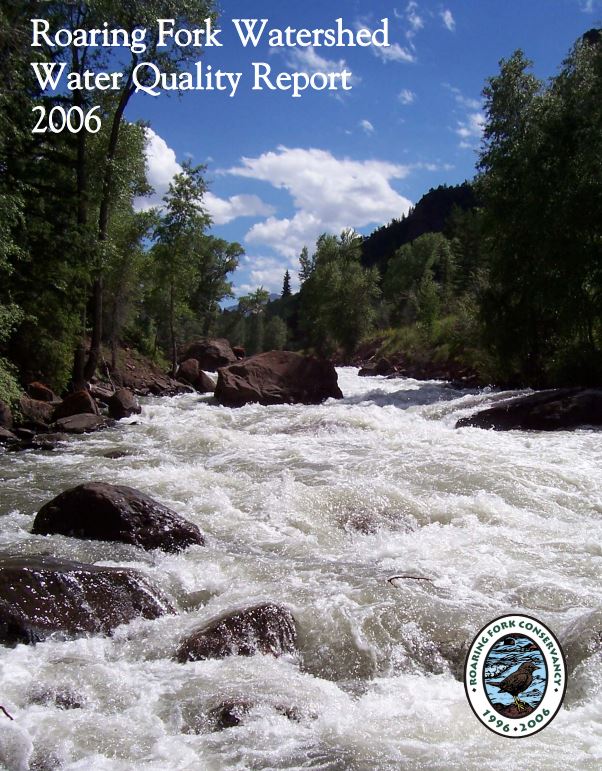Having sources of abundant, high quality water is vital to maintaining clean drinking water, agriculture, tourism, and the ecosystem health of the Roaring Fork Watershed. In 1997, the Roaring Fork Conservancy began a monitoring program to determine water quality conditions and trends throughout the watershed. The Roaring Fork Conservancy’s first State of the River Report synthesized data collected during 2000 and established a baseline inventory of water quality (Hempel & Crandall, 2001).
The data indicated high water quality throughout most of the watershed, and recommended that:
- Chemical data be supplemented by physical and biological evaluations, and
- Some changes in sample site locations be made. Incorporating these changes resulted in additional data for this report providing a more accurate portrayal of water quality and identification of issues to address.
This 2006 report covers the Roaring Fork water quality monitoring program, causes of pollution, health assessment of different stream reaches in the watershed, threats to healthy streams, and local efforts underway to protect water quality and educate citizens about the need for plentiful high quality water. Overall, water quality has remained high since 2000. However, some stream sections regularly exceed state health standards for drinking water supply and/or aquatic biological communities.
